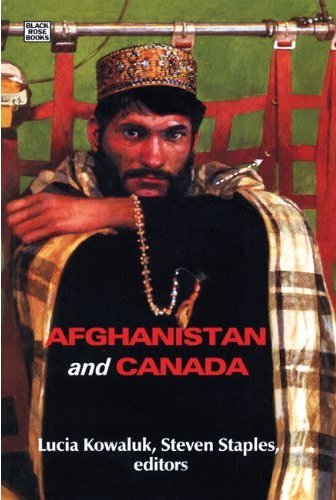The costs of the Afghan campaign will be tremendous when all government and private costs are included. Extending the campaign to the end of 2011 will dramatically increase those costs as equipment and people are worn down and high casualty rates continue.
Not only is the cost of the Afghanistan mission extremely high, it is also crowding out spending on Canada’s traditional uses for its military — peacekeeping.
Canada’s military has been withdrawing from peacekeeping for some time. The mission to Afghanistan has quickly completed the Canadian retreat. As the cost of the Afghan campaign increased, the much smaller contribution to UN missions shrank dramatically.
Over the course of the Afghanistan mission, DND spending on UN missions dropped 90%, from $94.1 million in FY 2000-01 to a low of $8.5 million in FY 2006-07, the lowest level in at least a decade. DND spending has recovered slightly since FY 2006-07 to an estimated $15.6 million in FY 2008-09. In the same period that DND spending on UN missions increased from $8.5 million to $15.6 million, DND spending on Afghanistan increased over $500 million, from $2.0 billion to $2.6 billion.
Canada’s withdrawal from peacekeeping has not been driven by a decline in the UN’s need for trained personnel. In fact, it has come at a time of historic need for the UN. The UN Missions in Liberia (UNMIL), Sudan (UNMIS) and the Democratic Republic of Congo (MONUC) were extremely demanding, so much so that by the end of 2006, the number of personnel working in UN peacekeeping missions hit a 16-year high of over 80,000 people.
The increasing needs of the UN is in contrast to DND’s vanishing contribution to UN peacekeeping. The same year the peacekeepers in the field hit new highs Canada’s peacekeeping spending hit rock bottom, at only $8.5 million including equipment and personnel. While the need for highly skilled Canadian personnel has never been higher for UN missions, Canadian contributions have never been lower. In July 2008, total Canadian personnel contributions to UN operations were a mere 167, ranking Canada 53rd of 119 contributing nations, between Slovakia at 52nd and Malawi at 54th.
The Afghanistan campaign has not only been extremely expensive, it has essentially abandoned Canada’s 50-year commitment to UN peacekeeping. While low levels of peacekeeping spending may continue for some time, the reorientation of the Canadian military is clear. For all intents and purposes, DND spending on peacekeeping missions has stopped. DND peacekeeping funding has been consumed by the much more combat-oriented Afghanistan mission.
Recent DND spending lays bare the fact that the Department is much more willing to spend on militaristic campaigns like the one in Afghanistan than it is to spend on UN peacekeeping missions of the kind that Canadians prefer. When push comes to shove, DND will cut peacekeeping contributions in favour of militaristic solutions.
As DND buries Canada’s 50-year involvement in peacekeeping, a more ominous version of international military intervention has arisen in its place. Pearson’s vision of the Canadian military supporting the United Nations in negotiating solutions has been replaced by an Americanized vision of militaristic solutions imposed by the force of arms.
Conclusions
Independent reports suggest that the situation in Afghanistan is precarious, and even though it has been dragging on longer than the Second World War, the lives of most Afghans remain unimproved, despite the Herculean effort by the international community.
The cost and risk of extending the mission as it is today must be set against the prospect of achieving our goals. Alarmingly, the government has not published its estimate for the cost “in treasure and blood” of extending the military mission until December 2011.
However, as this study has found, the cost will be extremely high. The extension of the war’s military cost is $6.4 billion, creating a total military bill of $17.8 billion by the end of 2011. When veterans’ health care and disability benefits are included along with the cost of CIDA’s reconstruction, taxpayers are left with a bill of $20.7 billion.
However, examining merely the government’s cost ignores the private costs to families and community of lost and injured soldiers. Once the full economic costs are included, the total value of the Afghanistan mission so far balloons to $17.2 billion. To run the mission at the present pace until December 2011 will require an additional $11.1 billion, for a full economic cost of $28.4 billion for the nine-year mission.
While extremely expensive for the military, the Afghanistan campaign has also meant the effective cancellation of Canadian peacekeeping. Military spending on Afghanistan has almost completely crowded out peacekeeping spending.
During the campaign in Afghanistan, DND spending on peacekeeping dropped over 90% to a possible all-time low of only $8.5 million in FY 2006-07. The very same year, DND increased spending on the Afghanistan campaign by $1.0 billion. This dramatic spending contrast spells the likely end of peacekeeping in the Canadian military.
If the Harper government believes that the mission can be successful, then the additional cost of extending the $11.1 billion mission and the effective cancellation of all UN missions may be a worthwhile endeavour in the pursuit of peace and stability in Afghanistan. But if there is any doubt, then a new strategy for Afghanistan must be adopted to quickly bring an end to the conflict.
Excerpt from “How Much Is this War Costing Canadians” by Steven Staples and David MacDonald, a chapter from Afghanistan and Canada by Lucia Kowaluk and Steven Staples, eds. with Black Rose Books 2009. Reprinted with permission.




